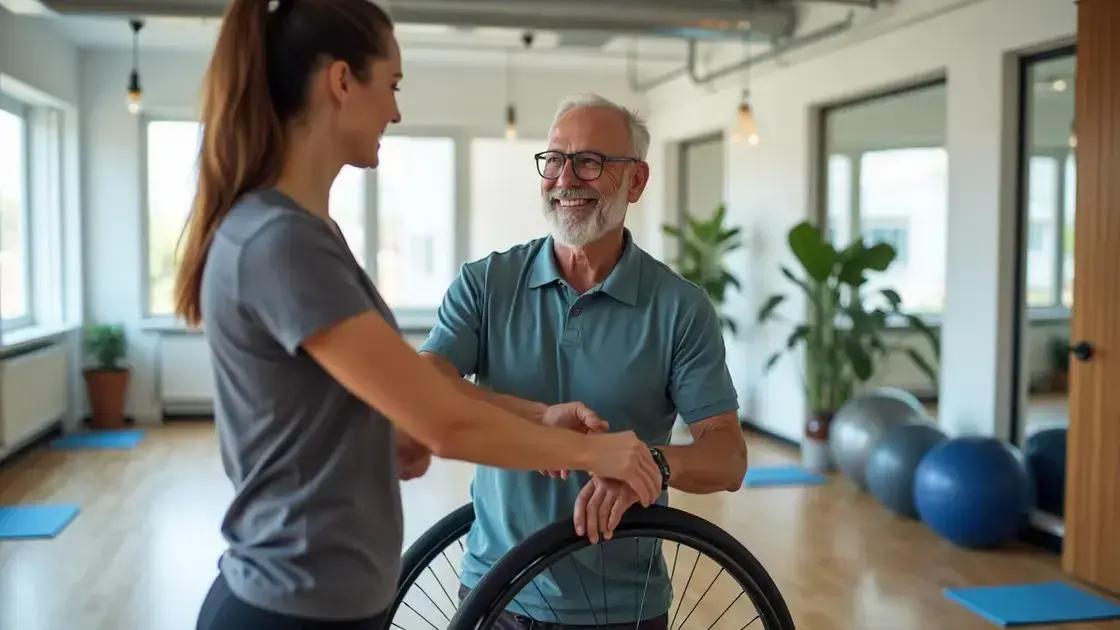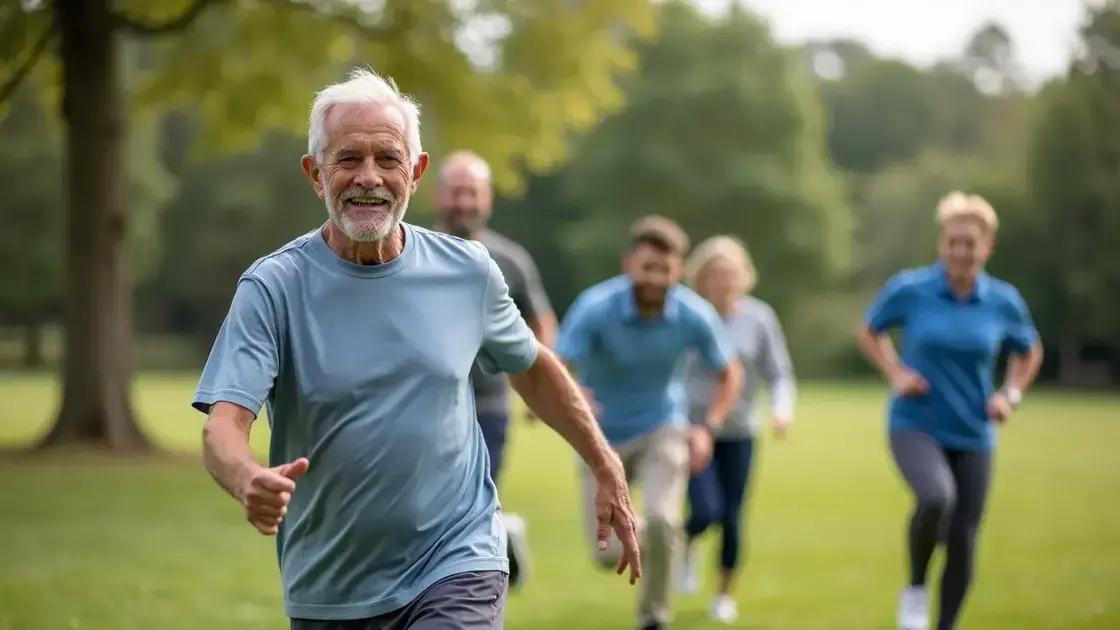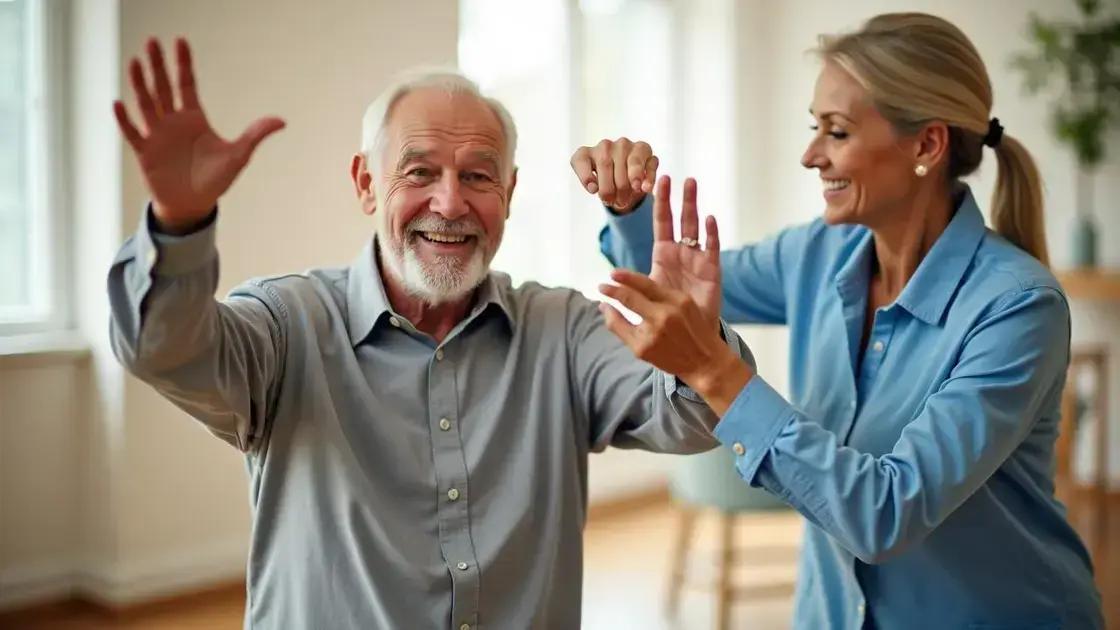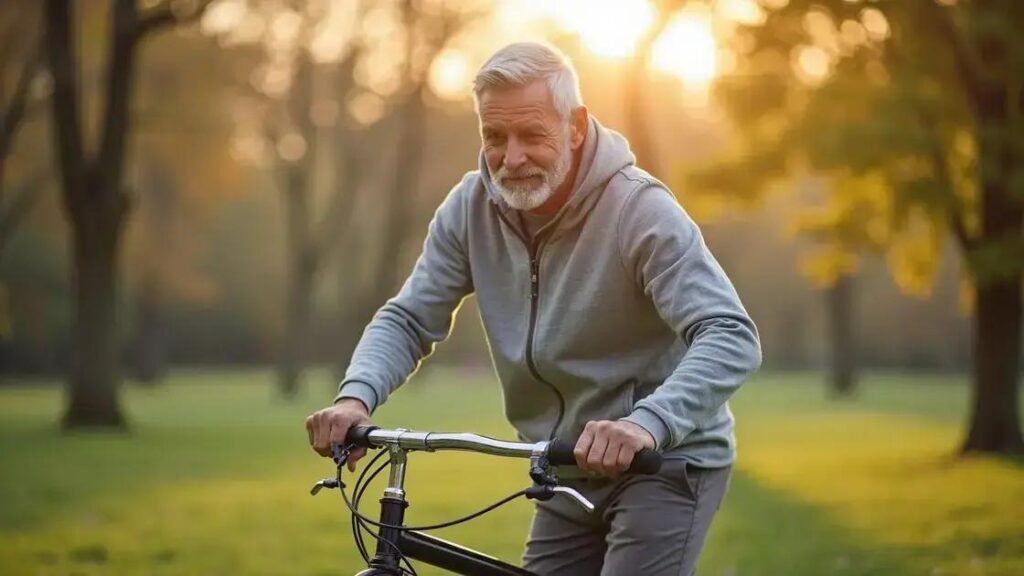Guided mobility routines are trending for older men, offering significant benefits such as improved physical health, enhanced mental wellness, and greater independence. These structured exercises, often led by professionals, not only boost strength and balance but also provide social engagement, making them an essential component of healthy aging.
Guided mobility routines are emerging as a vital trend for older men seeking to enhance their physical well-being and maintain independence. Regular mobility exercises help promote strength, flexibility, and balance while also fostering social interaction and mental engagement. This article explores the concept of guided mobility routines, detailing their benefits, practical implementation strategies, and inspiring success stories related to older men’s health and lifestyle.
Understanding Guided Mobility Routines

Guided mobility routines focus on helping older men improve their movement and overall health. These routines are designed with specific goals in mind, such as enhancing strength, balance, and flexibility. They involve a combination of physical activities and guidance from trained professionals or caregivers.
Types of Guided Mobility Routines
These routines can vary widely but generally include activities like walking, stretching, and low-impact exercises. Often, they also incorporate elements of physical therapy to address individual needs. Some guided routines may take place in groups, encouraging social interaction among participants while exercising.
Importance of Professional Guidance
Having a professional guide these routines is essential. Professionals can provide tailored exercises that cater to each individual’s ability level. They can also help ensure that exercises are performed safely, reducing the risk of injury. Regular evaluations help adapt the routines as older men’s abilities change over time.
How to Participate in Guided Mobility
Older men can participate in guided mobility routines through local community centers, gyms, or wellness programs that focus on senior fitness. Many organizations now offer classes specifically for older adults, making it easier for them to find supportive environments. Additionally, online sessions may be available, allowing for participation in the comfort of home.
Overall, understanding guided mobility routines is crucial for older men who wish to enhance their mobility and quality of life. With the right approach, these routines can become a vital part of maintaining independence and physical health.
Benefits for Older Men

Participating in guided mobility routines offers numerous benefits for older men. These benefits are crucial for maintaining health and enhancing quality of life.
Physical Health Improvements
One of the most significant benefits is improved physical health. Regular exercise through guided routines can strengthen muscles and bones, promote better joint flexibility, and improve cardiovascular health. These changes help combat age-related decline and prevent chronic conditions.
Mental Wellness
Guided mobility routines also positively impact mental wellness. Physical activity releases endorphins, which can reduce feelings of stress and anxiety. Furthermore, participating in group sessions fosters social connections, helping to combat feelings of loneliness or isolation.
Enhanced Balance and Coordination
Another key benefit is the enhancement of balance and coordination. This is especially important for older men, as falls are a common concern. Guided mobility exercises can help develop stability, enhancing confidence in movement and reducing the risk of falls.
Independence and Confidence
Lastly, engaging in these routines can lead to greater independence. As older men improve their mobility and physical strength, they may find it easier to perform daily activities without assistance. This increase in confidence can significantly enhance their overall quality of life.
Implementing Routines Effectively

Implementing guided mobility routines effectively is key to achieving the desired health benefits for older men. Here are some strategies to ensure success:
Start Slowly
When beginning a new routine, it is important to start slowly. Older men should gradually increase the intensity and duration of their exercises. This helps to build stamina and reduces the risk of injury. Starting with simple activities like walking or gentle stretching can be a great way to ease into a routine.
Set Realistic Goals
Setting achievable goals is crucial. Older men should focus on personal milestones rather than comparing themselves to others. Goals could range from being able to walk a certain distance to practicing a new exercise. Tracking progress can help maintain motivation.
Choose Enjoyable Activities
Incorporating activities that are enjoyable is essential to maintaining engagement in guided mobility routines. Whether it’s dancing, swimming, or walking in nature, older men are more likely to stick with routines that they find fun. Finding a workout buddy can enhance the experience, turning exercise into a social event.
Consistency is Key
Consistency is vital for the effectiveness of any routine. Older men should aim to follow their mobility routines regularly, ideally several times a week. Creating a schedule can help in establishing a habit and ensuring accountability.
Seek Professional Guidance
Working with a physical therapist or fitness instructor knowledgeable about older adult needs can facilitate effective implementation. Professionals can provide personalized adjustments to routines, ensuring they align with individual capabilities.
Real-Life Success Stories

Real-life success stories demonstrate the effectiveness of guided mobility routines for older men. These personal accounts inspire and highlight the positive impacts of regular exercise.
Bill’s Journey to Better Health
Bill, a 72-year-old retired teacher, struggled with mobility after knee surgery. After joining a guided mobility program at his local community center, he began participating in tailored exercises. Within a few months, Bill noticed significant improvements in his strength and balance. He now enjoys hiking and has even made new friends in the program.
Marilyn’s Transformation
Marilyn, 68, was hesitant to start exercising due to fear of falling. However, after a few group sessions focused on balance and coordination, she began to feel more confident. With professional guidance, she learned safe techniques, which reduced her anxiety. Today, Marilyn walks daily and participates in a local dance class, celebrating her newfound independence.
A Group of Friends
A group of five older men, who met through a mobility program, bonded over their shared experiences. They support each other, motivating one another to stay active. They report that their overall health has improved, and their friendships have made exercise enjoyable. By participating together, they feel less isolated, illustrating the social benefits of guided mobility routines.
John’s Progress
At 75, John struggled with daily tasks and felt depressed. After joining a guided routine tailored for seniors, he made remarkable strides. With the help of an instructor, he improved his strength and regained his energy. As a result, John has started volunteering and feels more fulfilled, demonstrating that exercise not only improves physical health but can also enhance life satisfaction.
In conclusion, the impact of guided mobility routines on older men is profound
These routines not only enhance physical health but also contribute significantly to mental and emotional well-being. By understanding the benefits, implementing effective strategies, and learning from real-life success stories, older men can experience improved mobility and quality of life.
As guided mobility routines continue to trend, it is essential for individuals to find enjoyable activities, set realistic goals, and seek professional guidance where necessary. The journey to better health and independence is achievable, as highlighted by inspiring personal accounts.
Ultimately, embracing these routines can lead to greater confidence and an enriched lifestyle, making guided mobility an essential component of healthy aging.
FAQ – Frequently Asked Questions about Guided Mobility Routines for Older Men
What are guided mobility routines?
Guided mobility routines are structured exercises designed to improve movement, strength, balance, and overall health for older men, often led by trained professionals.
What are the benefits of participating in guided mobility routines?
Benefits include enhanced physical health, improved mental wellness, greater balance and coordination, increased independence, and opportunities for social interaction.
How can older men start guided mobility routines?
Older men can start by joining local community centers, fitness classes designed for seniors, or engaging in online sessions tailored to their capabilities.
Is it necessary to have professional guidance?
While it’s not mandatory, professional guidance is highly recommended to ensure exercises are safe, effective, and personalized to the individual’s needs.
Can guided mobility routines help with recovery from injuries?
Yes, guided mobility routines can promote recovery from injuries by strengthening muscles, improving flexibility, and enhancing overall mobility.
Are guided mobility routines suitable for everyone?
These routines can be tailored to meet the needs of various fitness levels. It’s best for individuals to consult with their healthcare provider before starting any new exercise program.












